In a recent Houzz Call, we asked you to share photos of your backyard beauties, whether wild flowers, succulents or a mystery bush on the side of the house. The gardeners among you were quick to respond with splendid images showing plant pride. Here’s a roundup of a few standouts.
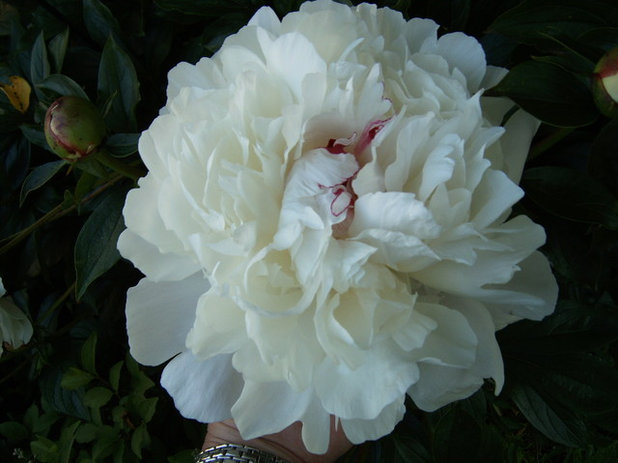
Take a look at the bottom of this photo. No, that’s not a genetically mutated stem — that’s Houzz user midmodfan’s wrist. She says she planted this ‘Festiva Maxima’ peony herself back in 2000, and six years later took this photo. We can only imagine the size of it now. ‘Festiva Maxima’ it certainly is, and “they smell heavenly too,” she says.
See 20 ways to work a white garden
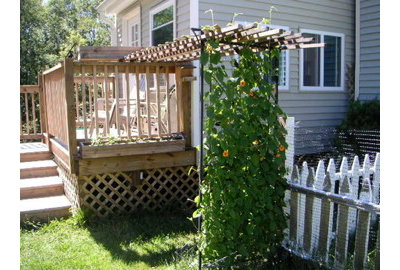
Amy Rafferty brought this trellis with her from her last house with no particular plan for how to use it. Now it holds her favorite garden growth, some beautifully delicate black-eyed Susan vines. “Since I have no talent at making things grow, when I invest in planting something in the yard, it’s in hopes that it will do relatively well on its own — and this climbing flower certainly does,” Rafferty says. “When I see recommendations to leave things wild to attract the bees and the butterflies, I take a giant step forward and say, ‘I can do that.’”
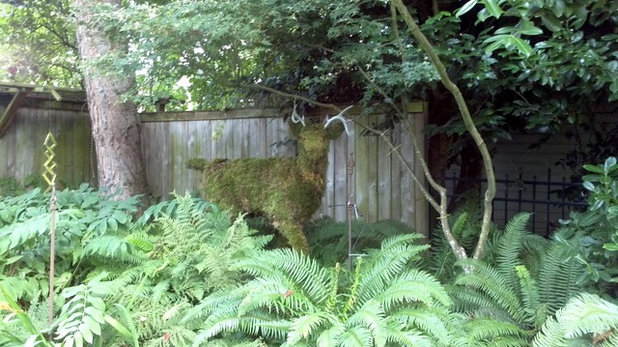
Sword fern (
Polystichum munitum), Solomon’s seal (
Polygonatum biflorum) and lily of the valley (
Convallaria majalis) all flourish in Flip Breskin’s yard. But the star of the show is the beautifully crafted topiary stag produced by international artist Oliver Strong.
Although the foliage is easily maintained, the upkeep of those horns has proved much more difficult. “In the wild, stags shed their antlers every year and grow new ones,” Breskin says. “The forests would be knee-deep in antlers if they weren’t the source of calcium for squirrels, chipmunks and all the little gnawing critters. But it means I have to find new antlers for Moss Hart every few years.”
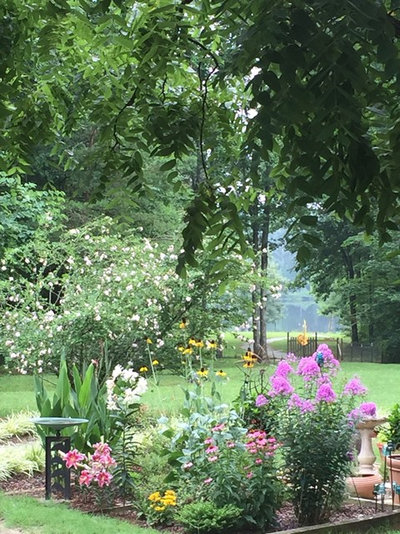
“This pollinator garden adds much more to our life than mere color,” Ginny Phelans says. When she and her husband retired to their new home in North Carolina just a few years ago, both the house and the landscape were definite fixer-uppers. But Phelans felt that starting from scratch was a breath of fresh air after living in the same house with the same yard for 35 years.
“We chose to renovate the property first because that’s where we derive the most pleasure,” she says. Her plant pride, her pollinator garden, now provides welcome company in the form of butterflies, bees and hummingbirds. “No idea what my favorite is,” she says. “But this is our breakfast view, and it makes me smile every day.”
See more flowers for attracting butterflies and bees
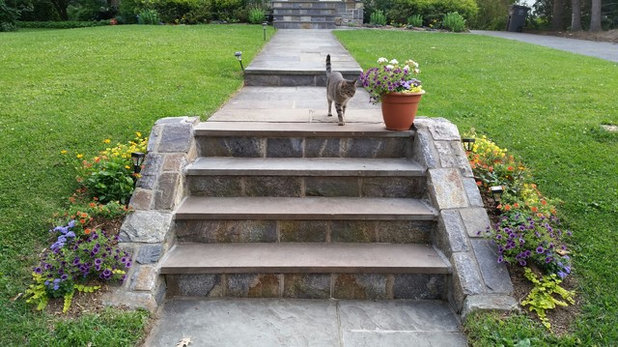
“I like bright annuals to greet anyone visiting, so I have them at the front of the stairs and in window boxes,” Margaret Egan says. The foot of her walkway, pictured here, includes mini petunias in assorted colors, purple flossflower (
Ageratum sp.) and a few unidentified, multicolored daisies. It seems these beauties attract visitors of all kinds: the kitty in this photo is a neighbor, a welcome guest, who Egan says just likes to follow her around.
Many Houzz users posted warnings in the Comments section about garden varieties that can be dangerous if ingested by animals. So if you are a pet owner (or neighbor) and a gardener, we encourage you to research pet-friendly plants.
See 22 plants to keep away from pets
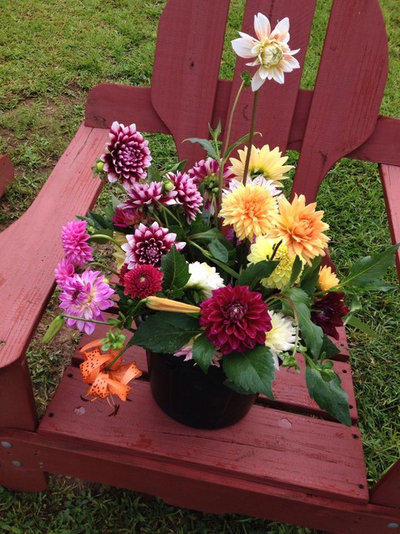
These beautiful dahlias belong to Kelly Boerner, who purchased a home that, in a previous life, had been part restaurant and part rose nursery. “I’m sure it looks a lot different now, but we do our best to fill the beds and landscape with flowers,” she says.
All her work has paid off, because she now has a beautiful array of dahlias to enjoy. Her tip for other gardeners: “Dahlias do not like the summer heat and humidity, but if you can nurse them through July and August, you can still have fall blooms on some varieties,” she says. “The main concern for dahlias is support and to not let the tubers set in water.”
She arranged her garden on an incline, which helps with the drainage and growth of these beautiful flowers.
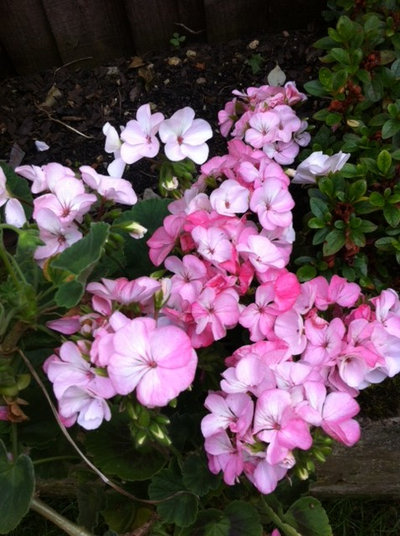
Joanna Perkins has a modest garden in her London home. The backyard blooms she shared with us are her purple geraniums. “I love that you can just take cuttings and leave them in a cup of water for a few days to grow new roots, so new plants cost nothing,” she says.
Her advice for other gardeners nursing these flowers is to add a touch of tomato plant food to the soil. “It will make them go wild with blooms,” she says.
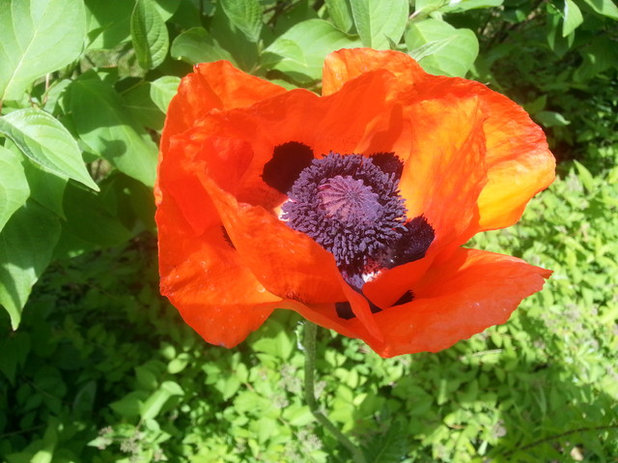
From Moscow comes Sigrid Olson’s opium poppy (
Papaver somniferum). Olson received the flower as a gift seven years ago, initially planting it in too shady an area for it to ever bloom again. Just recently, though, she had to remove a large sickly tree from her yard, giving the flower more sunlight. “I’ve had it for years, and this is the first year it bloomed,” she says.
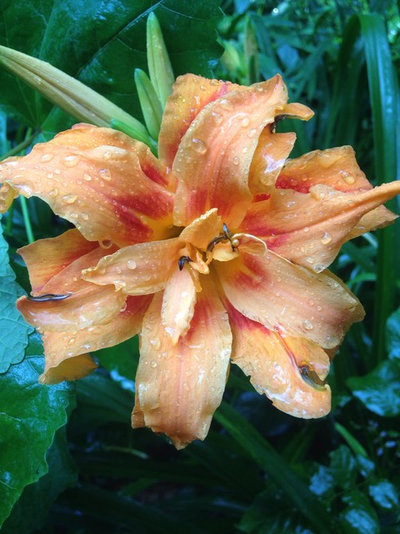
“I don’t have too many secrets,” Katherine Flowers says. This double-flowered daylily (
Hemerocallis sp.) is one of the many flowers she inherited when she and her family moved into their house. “This house has an obscene amount of flowers — a mixture of wildflowers, things found in fine gardening magazines, flowering trees and garden staples like roses, peonies and lilies,” Flowers says.
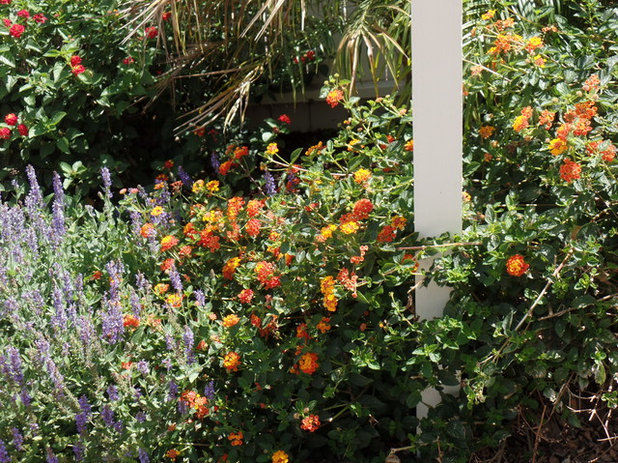
“We’ve lived in our house for 29 years, and we have gone through some plants,” Delora Ricky says. When she and her husband moved into their quarter-acre home in Southern California, the property boasted more than 100 different plants. With such a wide variety of plant life, the Rickys found the garden hard to maintain: “As we aged, along with our home, the desire to have year-round greenery and flowers that required minimal upkeep and less water became our goal,” Delora says. After doing their research, they settled on the lantana pictured here; they find it fulfills every one of their goals.
They advise arranging this plant on a gentle slope aimed toward other plants. This will help avoid too much water for the drought-tolerant lantana, as well as drain any excess water toward plants that may require a bit more. “Once a year in November or December, we ‘buzz cut’ everything,” she says, which helps the growth of the plant come springtime.
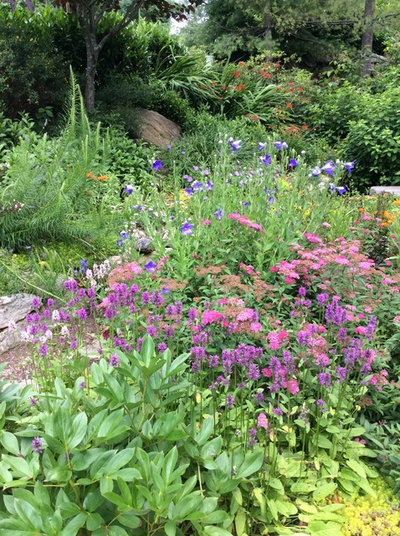
Kendra Haines’ favorite flowers change with the season, and right now in Blue Ridge Mountains, North Carolina, it seems spirea, bergenia and crocosmia are the backyard blooming beauties.
A recent piece of advice she came across: Over the winter, leave the garden as is. “I think it really improved this year’s overall garden health,” she says.
I still love my daisies, but after seeing the hard work and love that Houzz homeowners have put into their yards, I have to agree with Kelly Handverger, who summed up this Houzz Call best when she commented, “Picking a favorite is like picking a favorite child.”





